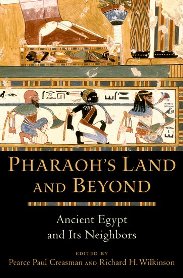| Main » Ad Board » ДРЕВЕН ЕГИПЕТ И АФРИКА » Комплексни изследвания |
| 30.06.2017, 08:30 | |
Крайно интересен сборник с материали, описващ отношенията на Древен Египет с неговите непосредствени съседи: Нубия (Куш), Либия, Палестина (Ханаан), Егейските острови във всички възможни аспекти. Разгледани са сухопътните и морски връзки, чрез които се осъществяват контактите. Особено внимание е отделено на различните насоки на тези контакти: обществени и дипломатически, търговски, заемки в архитектурата и изкуството, литературата и религията. Не са отминати и регионалните екологични явления и катастрофи - суша и наводнения, епидемии и техният ефект върху културите. - на английски език, от Google Docs,формат PDF, файлът не е архивиран. Сваляне с ляв бутон (downloading by left button) от страницата на предоставящия сървър, после през бутона стрелка надолу/after by down arrow button.
| |
| Views: 2027 | Placed till: 30.08.2022 | Rating: 0.0/0 | |

